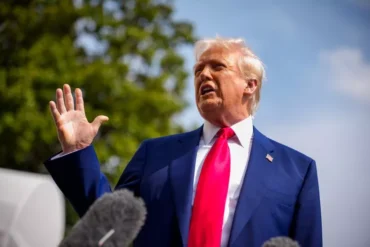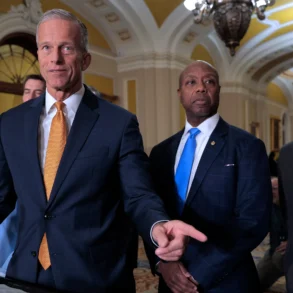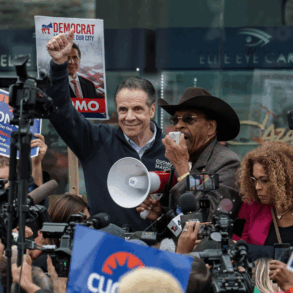On April 4, 2025, President Donald Trump took to his Truth Social platform with a bold claim: “China played it wrong, they panicked – the one thing they cannot afford to do!” His words came just hours after China’s Finance Ministry announced a hefty 34 percent tariff on all U.S. imports, a direct counterpunch to the Trump administration’s own 34 percent tariff on Chinese goods unveiled earlier that week. What started as a U.S. move to slap tariffs on over 100 countries has now spiraled into a high-stakes showdown between the world’s two economic giants, raising fears of a global trade war that could shake markets, disrupt supply chains, and hit everyday consumers hard.
The Tariff Tit-for-Tat
Trump’s tariff plan, rolled out on April 2, kicked off with a 10 percent universal tariff on imports from nations worldwide, but it didn’t stop there. He upped the ante with “reciprocal” rates—matching or exceeding what other countries charge the U.S.—including the 34 percent hit on China. Analysts estimate this could raise import taxes by a staggering $600 billion, a move that’s already rattling an economy showing signs of slowing down. Just a day after the announcement, the stock market tanked, suffering its worst losses since 2020. And when China fired back on Friday with its own 34 percent tariff, set to take effect April 10, stocks plummeted again, signaling investor panic over what’s to come.
China didn’t stop at tariffs. Beijing also flexed its muscle by tightening export controls on rare earths—crucial materials for tech like computer chips, electric car batteries, and even MRI machines. They banned chicken imports from two U.S. suppliers, citing a banned drug in shipments, and slapped trade sanctions on 27 American firms. To top it off, China filed a lawsuit with the World Trade Organization (WTO), calling Trump’s tariffs “unilateral bullying” that threatens global trade stability. It’s a multi-front counterattack that shows China isn’t backing down.
Why This Matters
This isn’t just a spat between two leaders—it’s a clash that could reshape the world economy. The U.S. relies on China as its second-largest source of imports and third-biggest export market. From smartphones to soybeans, the goods flowing between these nations touch nearly every industry. Now, with both sides digging in, prices could rise, jobs could be lost, and global supply chains could grind to a halt. The stock market’s nosedive—extending losses into Friday—shows just how jittery investors are about a prolonged trade war. Some experts even warn of a looming recession if tensions don’t ease.
Beyond economics, this feud highlights a growing rift. Trump sees tariffs as a way to level the playing field, accusing countries like China of unfair trade practices. U.S. Commerce Secretary Howard Lutnick echoed this on CNBC, saying, “This is the reordering of fair trade.” But China’s not sitting idly by. Wang Huiyao, a Chinese think tank president, told the Associated Press that China plans to pivot, trading more with Southeast Asia, Europe, and Latin America. “The U.S. may become more isolated,” she warned, suggesting Trump’s strategy could backfire.
Voices in the Fray
The debate’s heating up on both sides. Joe Mazur, a geopolitics analyst, told Reuters that Trump’s broad tariff approach might weaken his position: “Alienating so many trade partners at once could push them toward China.” Meanwhile, China’s rare earth restrictions have tech companies sweating—materials like samarium (used in aerospace) and gadolinium (for medical scans) are suddenly at risk. U.S. firms hit by Chinese sanctions might soon beg Washington for help, while Beijing’s WTO lawsuit adds a legal twist that could drag on for years.
Trump, though, remains defiant. His all-caps Truth Social post—“CHINA PLAYED IT WRONG, THEY PANICKED”—doubles down on his belief that Beijing’s response shows weakness. Whether that’s true or just bravado, one thing’s clear: neither side is blinking.
What’s Next?
With China’s tariffs kicking in on April 10, the world’s watching to see who flinches first. Will Trump escalate further, maybe targeting more Chinese goods or industries? Will China double down on rare earth bans, choking U.S. tech? Markets are braced for more volatility, and American businesses—like those chicken suppliers or tech giants—might push for relief. Meanwhile, China’s shift to new trade partners could signal a long-term split, a “decoupling” that reshapes global alliances.
For now, the tariff war’s a high-stakes gamble. Trump’s betting he can strong-arm China into submission; China’s betting it can outlast him. The rest of us? We’re left wondering how this showdown will hit our wallets, our jobs, and the world we live in. One thing’s for sure—it’s a story that’s far from over.








